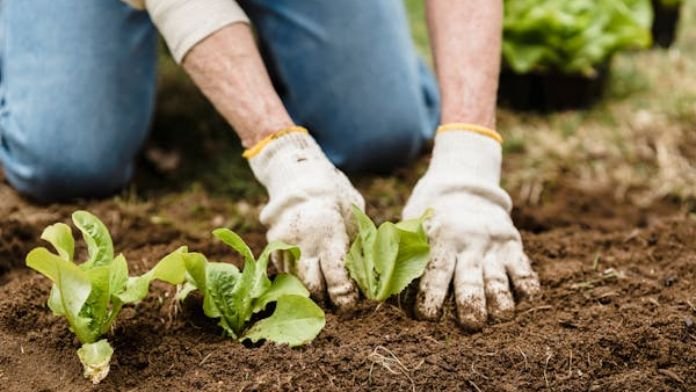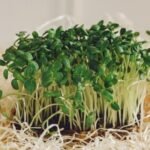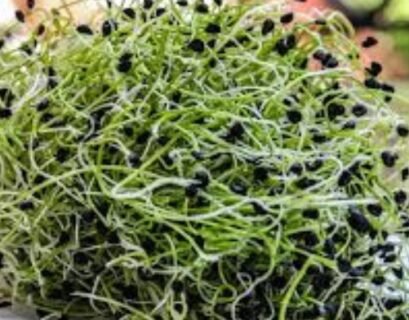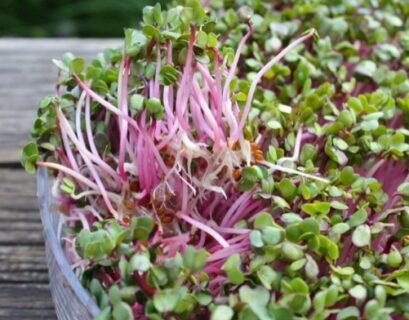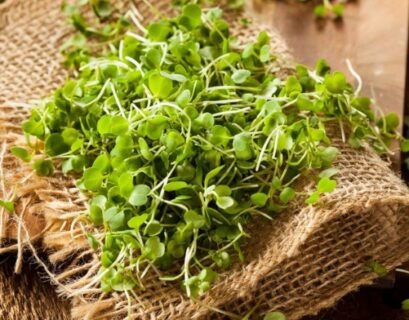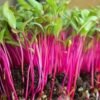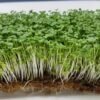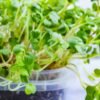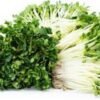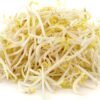Brussels sprouts require a cool climate to grow. The ideal climate is the “mist belt” of the Pacific Northwest, but they will grow almost anywhere in the country. A slow-growing, long-lived crop, Brussels sprouts should be planted in early spring or mid-to-late summer for a fall-ripening crop.
Small heads grow well in colder climates and even with light frosts. Spring planting is also good in cooler climates. Remember that sprouts that ripen in hot or dry weather will be brittle and bitter. Brussels sprouts belong to the cabbage family (Brassica oleracea), which includes cabbage, broccoli, cauliflower, collard greens, kale, and kohlrabi.
How to Plant Brussels Sprouts

When to Plant
Brussels sprouts require a growing season of 80 days or more and their flavor improves after a light frost. In general, plant seeds about four months before the expected first fall date in your area.
This probably means early summer to mid-winter areas, which will allow you to harvest in early winter. Or in regions with mild winters, you’ll usually plant in mid-summer for a mid-to-late winter harvest.
Selecting a Planting Site
Choose a site with plenty of sun and strong soil drainage. A raised bed is ideal because it better withstands temperature fluctuations. Growing containers is also an option.
Keep Brussels sprouts away from strawberry plants, as strawberries can stunt their growth. Also, don’t place Brussels sprouts next to members of the nightshade family, such as tomatoes, because Daikon sprouts can affect their growth.
Spacing, Depth, and Support
Plant seeds about half an inch deep and 3 inches apart. Then thin the seedlings to 18 to 24 inches apart when they are about 6 inches tall. Support stakes are sometimes needed to prevent plants from falling over as shoots develop, and it is best to add them at planting time.
Brussels Sprouts Plant Care

Light
Brussels sprouts do best in full sun, which means at least six hours of direct sunlight on most days. Excessive shade will delay shooting maturity.
Soil
Brussels sprouts thrive in clay, well-drained soil rich in organic matter. Ideally, mix a thick layer of compost into the soil before planting. The pH of the soil should be around the neutral level.
Water
Keep the sprout soil moist but not wet. About 1 to 1.5 inches of water per week should be sufficient. Inconsistent watering can result in poor shoot development. A layer of mulch can help retain soil moisture and keep the roots cool.
Temperature and Humidity
Brussels sprouts prefer temperatures between 45 and 80 degrees Fahrenheit, although they can tolerate brief periods below freezing. Moisture is usually not a problem as long as the soil’s moisture needs are met and there is good airflow around the plant.
Fertilizer
Use a high-nitrogen organic plant fertilizer when seedlings are about 6 inches tall. Reapply throughout the growing season following label directions.
Pollination
Brussels sprouts flower and produce seeds in their second growing season. And since most people grow them as annuals, they never reach this flowering stage. Insects and wind help in pollination.
Types of Brussels Sprouts

There are several varieties of Brussels sprouts that vary in appearance, production, and more:
- ‘Z Cross’ is a compact, high-yielding plant that is good for windy locations and can tolerate hot climates.
- ‘Long Island Improvement’ is another small but high-yielding plant that resists wind and tolerates frost.
- ‘Oliver’ takes 80 to 90 days to mature and is known for its disease resistance.
- ‘Falstaff’ has reddish-purple buds.
Harvesting Brussels Sprouts

Brussels sprouts grow first and do not begin producing sprouts until they reach almost full height. Each shoot grows in the leaf axil or joint. Shoots begin to ripen from the bottom of the plant upwards.
Begin harvesting when the lower shoots reach about an inch in diameter. Pick them before they get too big and start to crack and turn bitter. Each plant produces about one liter of bud.
Removing the sprouts is easy if you first remove the leaf from under each sprout. Then, twist and pull the shots. Some people prefer to use pruning. After harvest, a second crop of shoots may begin to grow at the base of the stem. They won’t be as hardy as the first crop, but they’re still edible.
You can store sprouts in the refrigerator for about five days. Don’t wash them until you plan to use them.
How to Grow Brussels Sprouts in Pots

If you don’t have a suitable garden location for Brussels sprout plants, growing them in containers can be a good option. This will allow you to control the sunlight, water, and soil of your plants.
Choose a container at least a foot wide and deep. It should have large drainage holes. Unglazed clay is an ideal material because it allows excess moisture from the soil to evaporate through its walls.
Pruning
Brussels sprouts usually do not need pruning. However, you need to remove damaged or diseased parts quickly before they weaken the entire plant. You can also remove yellow leaves to work on making plant buds.
Propagating Brussels Sprouts
Since most people grow Brussels sprouts as annuals, they will not be able to collect seeds in the plant’s second year for propagation. However, it is possible to regrow Brussels sprouts from scraps. This is an easy way to get more out of your crops, especially if you can’t eat all the sprouts. The best time to start this process is early summer when planting outside. How about that:
- Wash the sprout, and remove any dead leaves.
- Cut the bottom off the sprout.
- Position the cut piece with the stem side down so that it’s just submerged in a shallow dish of water. Do not fully submerge the sprout. Place the dish in a warm spot with bright, indirect light.
- Refresh the water daily. Also, remove any dead leaves.
- Look for roots forming from the stem in around two weeks. Leaves also will begin to grow from the top. Once there is a substantial root system, the sprout should be ready for transplanting.
How to Grow Brussels Sprouts From Seed

Brussels sprout seeds germinate best between 45 and 85 degrees Fahrenheit. To start plants in containers, gently press the seeds into the moist seed mix. Keep the soil moist but not wet, and place the pot in a warm spot with bright, indirect light. Expect germination in about three weeks.
Potting and Repotting Brussels Sprouts
For growing in containers, use a loose organic vegetable potting mix. If you want, you can mix a little compost into the soil to improve its drainage and nutrient content. Repotting will not be necessary, as it is best to select a pot suitable for the plant’s mature size at the time of planting.
Conclusion
Since Brussels sprouts are usually grown as annuals, they won’t need overwintering. Just be sure to plant early enough so your area can harvest before freezing temperatures arrive.
FAQ
Are Brussels sprouts easy to grow?
Slow but relatively easy to grow, Brussels sprouts provide a valuable harvest during the cold winter months. Cabbage or a member of the cabbage family, they are very hardy and produce well even in cold winters. Sprouts have the sweetest flavor when harvested after sprouting.
What is a brussel sprout plant called?
Brussels sprouts are a cultivated brassica in which the marketable part of the plant is the swollen axillary buds known as “buds” or “buds”. It is generally classified as Brassica oleracea var. Gemifera DC.
Do Brussels sprouts need sun?
Like most vegetables, Brussels sprouts need a minimum of 6 hours of sunlight daily; The more the better. They prefer fertile, well-drained, moist soil with plenty of organic matter.
Are brussel sprouts male or female?
Flowers of Brassica oleracea species are hermaphrodites, meaning they have male and female organs. Most of them are self-sterile: pollen from one plant’s flower can only fertilize another plant. Therefore, plants are allogamous.
